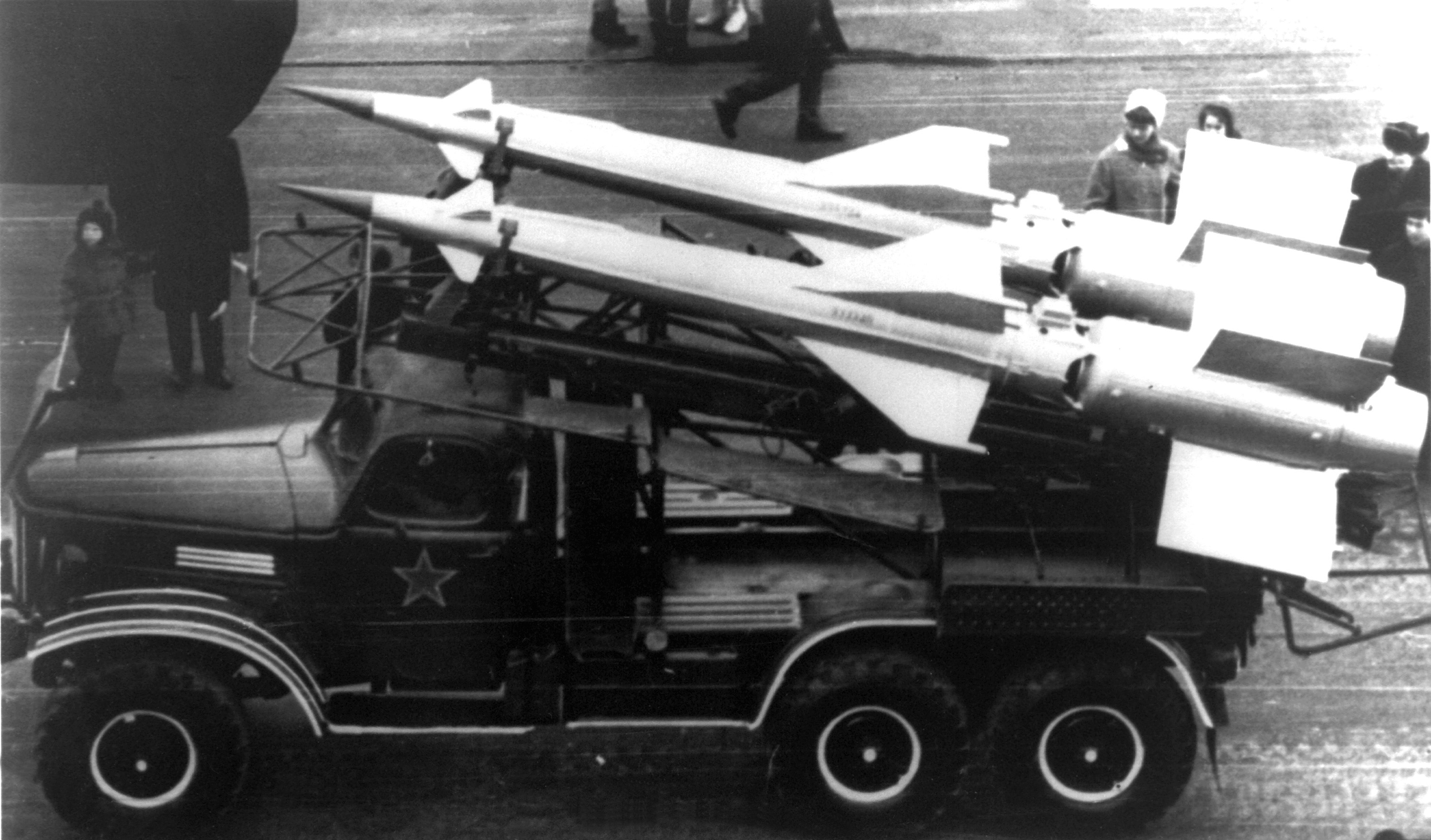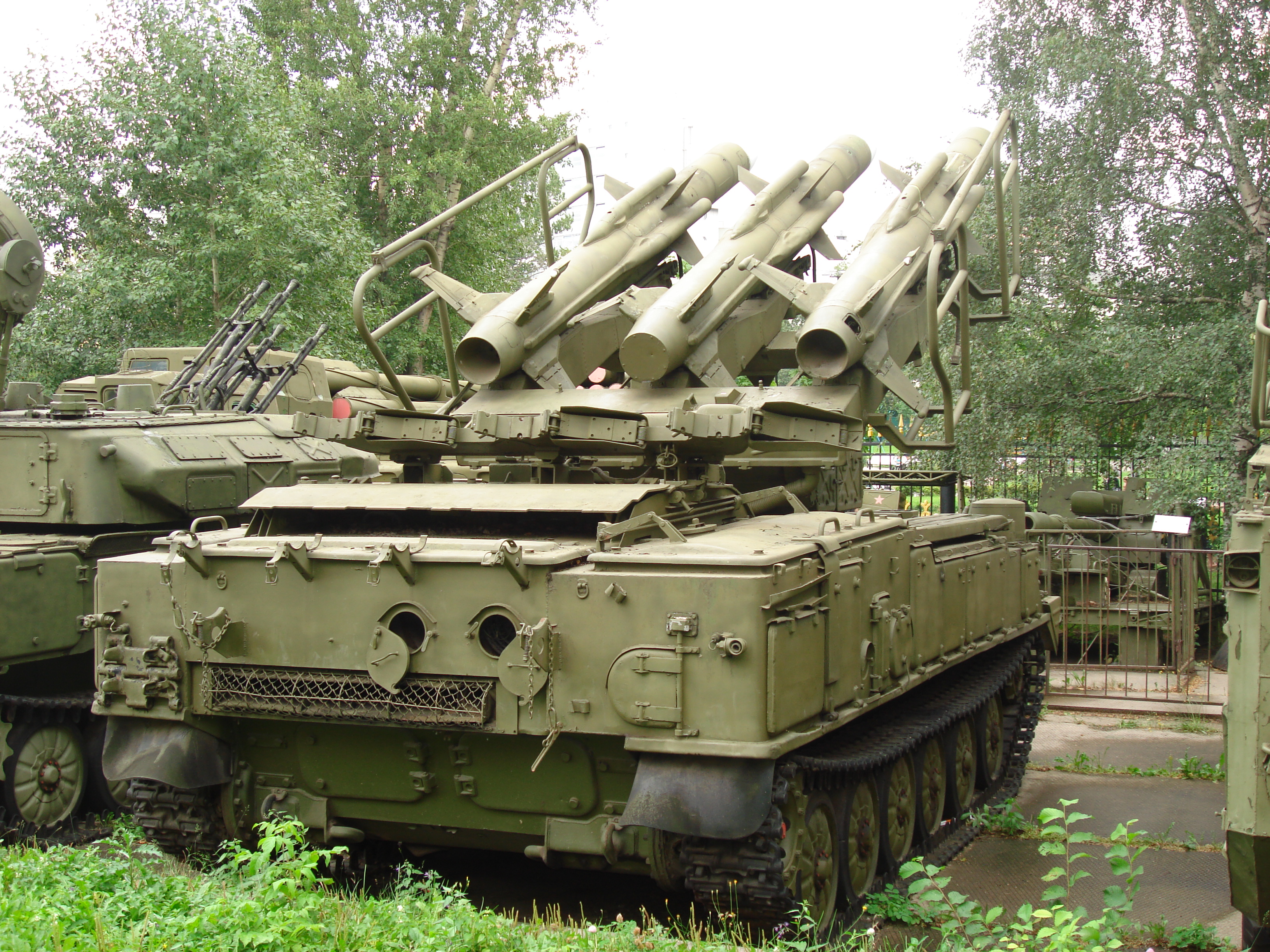|
Mohammed Elshahat
1- Personal Memoir * Date of Birth : 1/2/1941 * Married and has four children (two sons and two daughters) 2- Military Education *Received number of advanced AD courses * AD battalion commander course from the Govorov Air Defense Academy in the Soviet Union 1969-1971 * AD Brigade commander course * Staff course from command and staff college * Fellowship degree from Nasser Academy (War college) * High commander course from Nasser Academy 3- Main Posts * Commander of AD Missile Battery and Battalion during Attrition War and 6th Oct. War. * Commander of AD Missile Brigade * Commander of AD Division * Chief of AD Training Department * Director Manager of AD College * Chief of staff of AD Forces in June 1994 * Commander of AD Forces in April. 1996 4- Battle Field Experience * June 1967 War * October 1973 War 5- Decoration Awarded * Medal of Excellent Service * Merit of Long Service and Good Example * Merit of Training * Merit of Military Duty References {{DEFAULTSORT:Elshah ... [...More Info...] [...Related Items...] OR: [Wikipedia] [Google] [Baidu] |
Egyptian Air Defense Command
The Egyptian Air Defence Forces or EADF ( ar, قوات الدفاع الجوي, Quwwat El-Difa' El-Gawwi), is the Anti-aircraft warfare branch of the Egyptian Armed Forces. It is responsible for protecting the Egyptian airspace against any hostile air attacks. The EADF was established in accordance with the presidential decree issued on 1 February 1968, which established the Air Defence Forces as the fourth branch, next to the Navy, Egyptian Ground Forces, and Egyptian Air Force. From 1938 onwards air defence forces had been part of the artillery and under the operation command of the Air Force. Egypt has a modern system of air defence armament, which is divided between anti-aircraft missiles long, medium and short-range anti-aircraft artillery systems and early warning radars. Both Western and Soviet bloc countries have supplied equipment. Officers are mostly graduates of the Egyptian Air Defense Academy, located in Alexandria. The headquarters is in Cairo, and ... [...More Info...] [...Related Items...] OR: [Wikipedia] [Google] [Baidu] |
Ahmed Abou Talib
Ahmed Abou Talib is a former commander of the Egyptian Air Defence Forces. He graduated from the Military College in April 1959 and was commissioned in a SPAAG regiment. He was Commander-in-Chief of the Air Defence Forces from April 1993 to April 1996. Major Activities: Commanding a Battalion of SA-3 The S-125 ''Neva/Pechora'' (russian: С-125 "Нева"/"Печора", NATO reporting name SA-3 ''Goa'') is a Soviet surface-to-air missile system that was designed by Aleksei Isaev to complement the S-25 and S-75. It has a shorter effective ra ... and ZSU-23-4 during the War of Attrition between 1970 and 1973. Chief of Operations in 2nd SAM Brigade from 1973 until 1977. Commander of 1st SAM Brigade between 1979 and 1982. Starting the operation of central sector of command, control and communication system of the Air defence forces. Participated in the following wars: * 1967 war * 1973 war References {{DEFAULTSORT:Talib, Ahmed Abou Egyptian generals 1938 births ... [...More Info...] [...Related Items...] OR: [Wikipedia] [Google] [Baidu] |
Sami Hafez Anan
Lieutenant General Sami Hafez Anan or Enan ( ar, سامى حافظ عنان, ; born 2 February 1948) is an Egyptian military officer. He was the Chief of the General Staff of the Armed Forces from 2005 until August 2012, until his retirement was announced by President Mohamed Morsi. In January 2018, he announced himself as a candidate in the 2018 Egyptian presidential election before being arrested for violating the military rules for announcing his candidacy without seeking the Supreme Council of the Armed Forces approval, which "constituted clear incitement against the armed forces with the intention of driving a wedge between it and the great Egyptian people." He was also accused of forging documents to falsely indicate his military service was terminated. He was released on 22 December 2019. Early career He commanded a brigade from 1992. From 1990 to 1993 he was the Egyptian Defence Attaché to Morocco. From 1996 to 1998 he reportedly commanded the 5th Air Defence Division. ... [...More Info...] [...Related Items...] OR: [Wikipedia] [Google] [Baidu] |
Hosni Mubarak
Muhammad Hosni El Sayed Mubarak, (; 4 May 1928 – 25 February 2020) was an Egyptian politician and military officer who served as the fourth president of Egypt from 1981 to 2011. Before he entered politics, Mubarak was a career officer in the Egyptian Air Force. He served as its commander from 1972 to 1975 and rose to the rank of air chief marshal in 1973. In 1975, he was appointed vice president by President Anwar Sadat and assumed the presidency after his assassination in 1981. Mubarak's presidency lasted almost thirty years, making him Egypt's longest-serving ruler since Muhammad Ali Pasha, who ruled the country for 43 years from 1805 to 1848. Less than two weeks after the assassination of President Anwar Sadat, Mubarak quickly assumed the presidency in the single-candidate 1981 referendum, and renewed his term through single-candidate referendums in 1987, 1993, and 1999. Under United States pressure, Mubarak held the country's first multi-party election in 2005, w ... [...More Info...] [...Related Items...] OR: [Wikipedia] [Google] [Baidu] |
Flag Of The Egyptian Air Defense Forces
A flag is a piece of fabric (most often rectangular or quadrilateral) with a distinctive design and colours. It is used as a symbol, a signalling device, or for decoration. The term ''flag'' is also used to refer to the graphic design employed, and flags have evolved into a general tool for rudimentary signalling and identification, especially in environments where communication is challenging (such as the maritime environment, where semaphore is used). Many flags fall into groups of similar designs called flag families. The study of flags is known as "vexillology" from the Latin , meaning "flag" or "banner". National flags are patriotic symbols with widely varied interpretations that often include strong military associations because of their original and ongoing use for that purpose. Flags are also used in messaging, advertising, or for decorative purposes. Some military units are called "flags" after their use of flags. A ''flag'' (Arabic: ) is equivalent to a brigade in ... [...More Info...] [...Related Items...] OR: [Wikipedia] [Google] [Baidu] |
Lieutenant General
Lieutenant general (Lt Gen, LTG and similar) is a three-star military rank (NATO code OF-8) used in many countries. The rank traces its origins to the Middle Ages, where the title of lieutenant general was held by the second-in-command on the battlefield, who was normally subordinate to a captain general. In modern armies, lieutenant general normally ranks immediately below general and above major general; it is equivalent to the navy rank of vice admiral, and in air forces with a separate rank structure, it is equivalent to air marshal. A lieutenant general commands an army corps, made up of typically three army divisions, and consisting of around 60 000 to 70 000 soldiers (U.S.). The seeming incongruity that a lieutenant general outranks a major general (whereas a major outranks a lieutenant) is due to the derivation of major general from sergeant major general, which was a rank subordinate to lieutenant general (as a lieutenant outranks a sergeant major). In contrast, ... [...More Info...] [...Related Items...] OR: [Wikipedia] [Google] [Baidu] |
ZSU-23-2
The ZU-23-2, also known as ZU-23, is a Soviet towed 23×152mm anti-aircraft twin-barreled autocannon. ZU stands for ''Zenitnaya Ustanovka'' (Russian: Зенитная Установка) – anti-aircraft mount. The GRAU index is 2A13. Development history The ZU-23-2 was developed in the late 1950s. It was designed to engage low-flying targets at a range of 2.5 km as well as armoured vehicles at a range of two kilometres and for direct defence of troops and strategic locations against air assault usually conducted by helicopters and low-flying airplanes. In 1955, KBP presented the single-barrel ZU-1 and the twin-barrel ZU-14. While the former was eventually dropped, the ZU-14 was selected and, after some modifications, entered series production. In the Soviet Union, some 140,000 units were produced. The ZU-23 has also been produced under licence by Bulgaria, Poland, Egypt and the People's Republic of China. Development of this weapon into a self-propelled anti-aircraft gu ... [...More Info...] [...Related Items...] OR: [Wikipedia] [Google] [Baidu] |
ZSU-23-4
The ZSU-23-4 "Shilka" is a lightly armored Soviet self-propelled, radar-guided anti-aircraft weapon system (SPAAG). Etymology The acronym "ZSU" stands for ''Zenitnaya Samokhodnaya Ustanovka'' (russian: Зенитная Самоходная Установка), meaning "anti-aircraft self-propelled system"; the "23" signifies the bore diameter in millimeters; the "4" signifies the number of gun barrels. It is named after the Shilka River in Russia. Afghan soldiers nicknamed it the "sewing machine" due to the sound of firing guns. It is also referred to by its nickname of "Zeus", derived from the Russian acronym. History The previous Soviet self-propelled anti-aircraft gun (SPAAG), the ZSU-57-2, was armed with two 57 mm autocannons; it was aimed optically using a basic tracking and lead calculating system. The ZSU-57-2 was not particularly successful despite its very powerful autocannons; given their large caliber, it could only carry 300 rounds, was inaccurate as it lacked r ... [...More Info...] [...Related Items...] OR: [Wikipedia] [Google] [Baidu] |
SA-2
The S-75 (Russian: С-75; NATO reporting name SA-2 Guideline) is a Soviet-designed, high-altitude air defence system, built around a surface-to-air missile with command guidance. Following its first deployment in 1957 it became one of the most widely deployed air defence systems in history. It scored the first destruction of an enemy aircraft by a surface-to-air missile, with the shooting down of a Taiwanese Martin RB-57D Canberra over China on 7 October 1959 that was hit by a salvo of three V-750 (1D) missiles at an altitude of 20 km (65,600 ft). This success was credited to Chinese fighter aircraft at the time to keep the S-75 program secret. This system first gained international fame when an S-75 battery, using the newer, longer-range, higher-altitude V-750VN (13D) missile was deployed in the 1960 U-2 incident, when it shot down the Lockheed U-2, U-2 of Francis Gary Powers overflying the Soviet Union on May 1, 1960. The system was also deployed in Cuba during the C ... [...More Info...] [...Related Items...] OR: [Wikipedia] [Google] [Baidu] |
SA-3
The S-125 ''Neva/Pechora'' (russian: С-125 "Нева"/"Печора", NATO reporting name SA-3 ''Goa'') is a Soviet surface-to-air missile system that was designed by Aleksei Isaev to complement the S-25 and S-75. It has a shorter effective range and lower engagement altitude than either of its predecessors and also flies slower, but due to its two-stage design it is more effective against more maneuverable targets. It is also able to engage lower flying targets than the previous systems, and being more modern it is much more resistant to ECM than the S-75. The 5V24 (V-600) missiles reach around Mach 3 to 3.5 in flight, both stages powered by solid fuel rocket motors. The S-125, like the S-75, uses radio command guidance. The naval version of this system has the NATO reporting name SA-N-1 Goa and original designation M-1 Volna (Russian Волна – ''wave''). Operational history Soviet Union The S-125 was first deployed between 1961 and 1964 around Moscow, augmenting the ... [...More Info...] [...Related Items...] OR: [Wikipedia] [Google] [Baidu] |
SA-6
The 2K12 ''"Kub"'' (russian: 2К12 "Куб"; en, cube) (NATO reporting name: SA-6 "Gainful") mobile surface-to-air missile system is a Soviet low to medium-level air defence system designed to protect ground forces from air attack. "2К12" is the GRAU designation of the system. Each 2K12 battery consists of a number of similar tracked vehicles, one of which carries the 1S91 (SURN vehicle, NATO designation "Straight Flush") 25 kW G/ H band radar (with a range of ) equipped with a continuous wave illuminator, in addition to an optical sight. The battery usually also includes four triple-missile transporter erector launchers (TELs), and four trucks, each carrying three spare missiles and a crane. The TEL is based on a GM-578 chassis, while the 1S91 radar vehicle is based on a GM-568 chassis, all developed and produced by MMZ. Development The development of the 2K12 was started after 18 July 1958 at the request of the CPSU Central Committee. The system was set the require ... [...More Info...] [...Related Items...] OR: [Wikipedia] [Google] [Baidu] |





